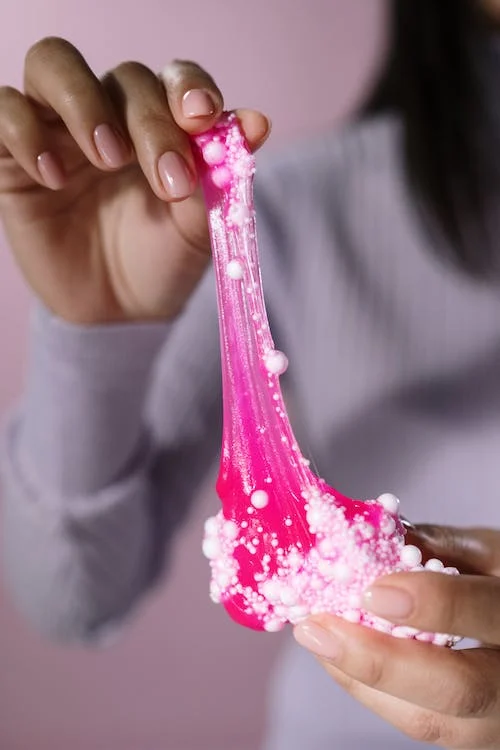Slime is something that children today love to play with, and most of us might have made one for a science project. However, some are confused about the state of slime because it flows like a liquid but its ability to flow is not constant. Slime is a kind of fluid that changes its ability to resist deformation according to shear or tensile stress. This kind of fluid is referred to by Scientists as a non-Newtonian fluid.
Slime as a Non-Newtonian Fluid
Newtonian fluids are liquids that pour and behave like oil, water, and alcohol. This is based on the observation of Isaac Newton, a great scientist who studied fluids and other discoveries in Mathematics.
His observation regarding fluids is that they have a constant viscosity and that the flow behavior of fluids or their viscosity varies when there are changes in the temperature or pressure. What’s strange is that some fluids do not conform to Newton’s observation of fluids, and these fluids are called non-Newtonian fluids.
Slime is described as a non-Newtonian fluid. The viscosity of the non-Newtonian fluids is affected by the application of shear stress such as squeezing, agitating, stirring, or putting a mechanical pressure on the fluids. This type of fluids could be so viscous sometimes making them hard to flow and could be mistaken as solids.
Slime as a Polymer
Slime is also a polymer or also known as a macromolecule or big molecule. It is made from large chains of molecules known as monomers, which could either be plastic or natural.
A single polymer is composed of thousands of monomers. Synthetic polymers include rubber, nylon, and plastic. Meanwhile, the natural polymers are DNA, starch, and some proteins. In polychemistry.com you will find more information about polymers.”
To be able to create slime, white glue is needed, which is a polymer. A white glue is consisting of long chains of polyvinyl acetate molecules. It is also considered liquid because its polymers could slide over one another and could make the glue flowing. It is also quite viscous, so it does not flow easily.
The Slime Formation
Did you know that all standard slimes are made the same way? It’s true. Slimes from stores, borax slime, liquid starch slimes, and even laundry detergent slimes are all created from the same reaction.
Cross-linking is a process needed for the slime formation. This process includes the shaping of bonds linking big molecules together making the fluid no longer slide past one another. The slime is formed because of the cross-linking between another material known as borax, which is a natural mineral and the protein molecules of white glue.
Once the cross-linking occurred, the big molecules in the white glue will then have difficulty moving past each other making it hard to flow. Meanwhile, the borate ions in the borax solutions make the big molecules link with one another making them even bigger. With this, the molecules have difficulty moving and sliding past one another. They become tangled mass resulting in a slimy solution called “slime.”
Making Slime
If you want to try making your own slime, here are the things you need:
- Borax (you could buy it at the grocery store or hardware store)
- White glue
- Water
- Food coloring (desired color)
- Stirring rod
- Disposable cup
- Eyedropper
After completing the materials, follow these steps to create your own slime:
- Put 1 gram of borax to 25 ml of water. Stir it well until the borax melted and became a borax solution.
- Get a disposable cup and pour 50 ml of white glue and 50 ml of water. Stir them again thoroughly.
- If you want a colored slime, you may add a few drops of food coloring with your desired color. Stir the mixture well.
- Now, you have a borax solution and white glue and water mixture. It’s time to apply the cross-linking. Get the eyedropper and add a drop of the borax solution at a time to the glue-water mixture and stir them using a stirring rod. Continue adding drops of borax solution to the glue-water mixture until it turned into slime. Remember not to add too much borax solution or the slime will harden or become brittle.
- Finally, you have the slime. Work and play it with your hands for better uniformity and viscosity.
It is indeed interesting to learn about the Science behind slimes. The next time you’ll be making slimes with your kids or with your friends, you will be able to explain to them the composition of slimes and how they work.
